
Layard's palm squirrel or Flame-striped Jungle Squirrel (Funambulus layardi)
Three-striped Palm Squirrel (Funambulus palmarum)
Northern Palm Squirrel (Funambulus pennantii)
Western Ghats Squirrel (Funambulus tristriatus)
Layard's palm squirrel or Flame-striped Jungle Squirrel (Funambulus layardi) is a species of rodent in the family Sciuridae endemic to Sri Lanka. The validity of the subspecies F. l. dravidianus based on a single specimen from the southern tip of India has been questioned, and is probably a juvenile F. sublineatus. Known as මූකලන් ලේනා (mukalan lena) in Sinhala.
It is endemic to the central highlands of Sri Lanka. Few observations are known out of central hills, such as from Trincomalee and Matara districts, but it remains unresolved. It can be seen in Knuckles mountain range and other high altitude ranges in western basin of the central hills.
Its head and body length is 12–17 cm, with a 14-cm tail. In color, it is blackish brown with three stripes on its dorsum; the central stripe is broadest and longest with an orange hue in F. signatus, yellow in F. layardi. Its underparts are reddish orange in color, and its snout is small. Tail bushy and blackish brown with some red in it. Some individuals also possess some grizzling appearance on it. Fur is soft, short and dense.
Its natural habitat is subtropical and tropical moist lowland forests or subtropical and tropical moist montane forests. It is threatened by habitat loss. It is a diurnal species as other squirrels of the genus and forage in full daytime. They are found on canopy level in forests, where they spend little time on ground. With night falls, they start to become noisy.
The main predators of this little creature are snakes, raptor birds, civets and small cats. Mongooses can be predators when they land on the ground floor.
These individuals were photographed at Singharaja National Park Sri Lanka.




The Indian Palm Squirrel or Three-striped Palm Squirrel (Funambulus palmarum) is a species of rodent in the family Sciuridae found naturally in India (south of the Vindhyas) and Sri Lanka. In the late 19th century, the palm squirrel was introduced to Madagascar, Réunion, Mayotte, Comoro Islands, Mauritius, and Seychelles. The closely related five-striped palm squirrel, F. pennantii, is found in northern India, and its range partly overlaps with this species.
The palm squirrel is about the size of a large chipmunk, with a bushy tail slightly shorter than its body. The back is a grizzled, grey-brown colour with three conspicuous white stripes which run from head to tail. The two outer stripes run from the forelegs to the hind legs only. It has a creamy-white belly and a tail covered with interspersed, long, black and white hair. The ears are small and triangular. Juvenile squirrels have significantly lighter coloration, which gets progressively darker as they age. Albinism is rare, but exists in this species.
Photographed in many locations in India and Sri Lanka.















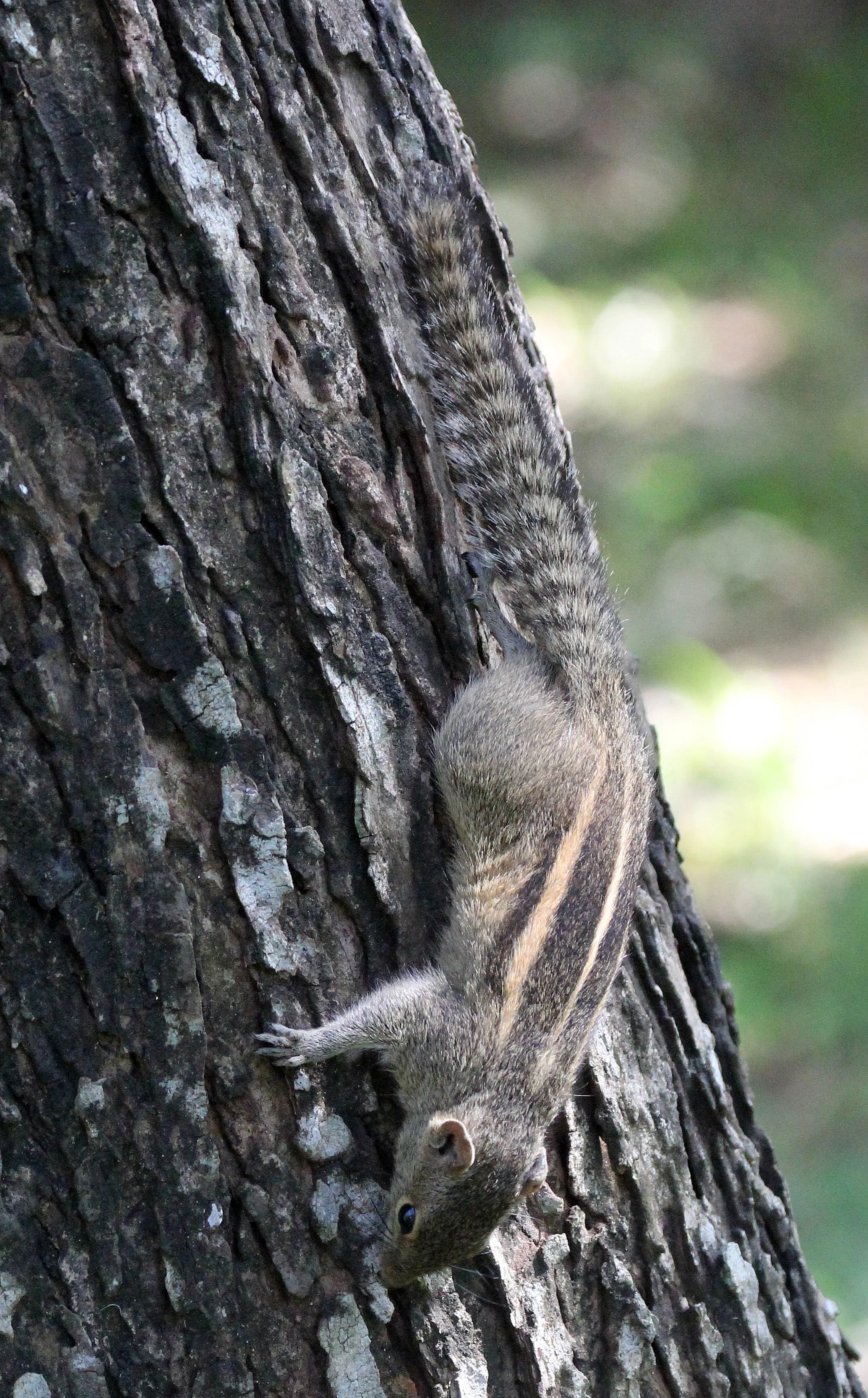
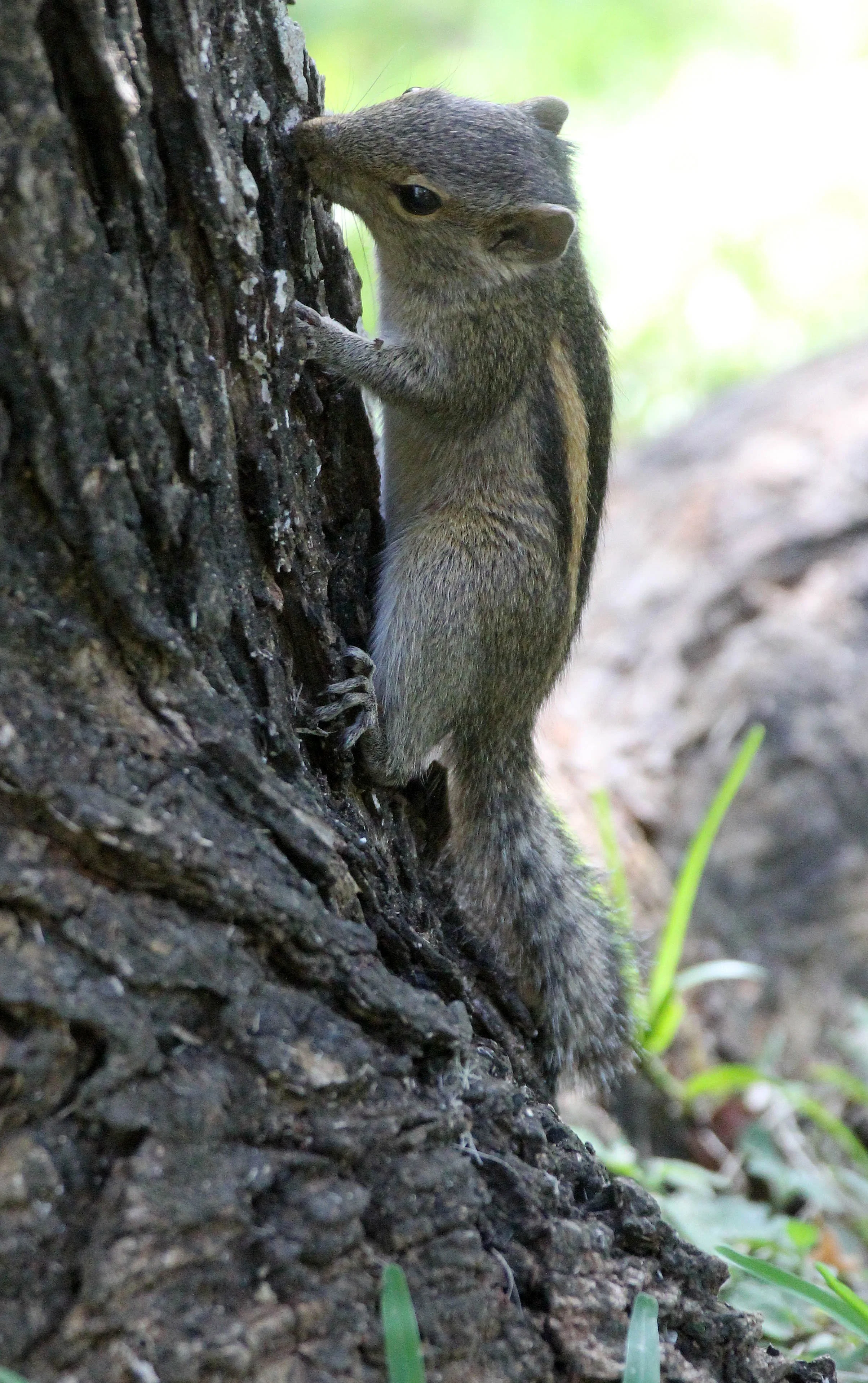
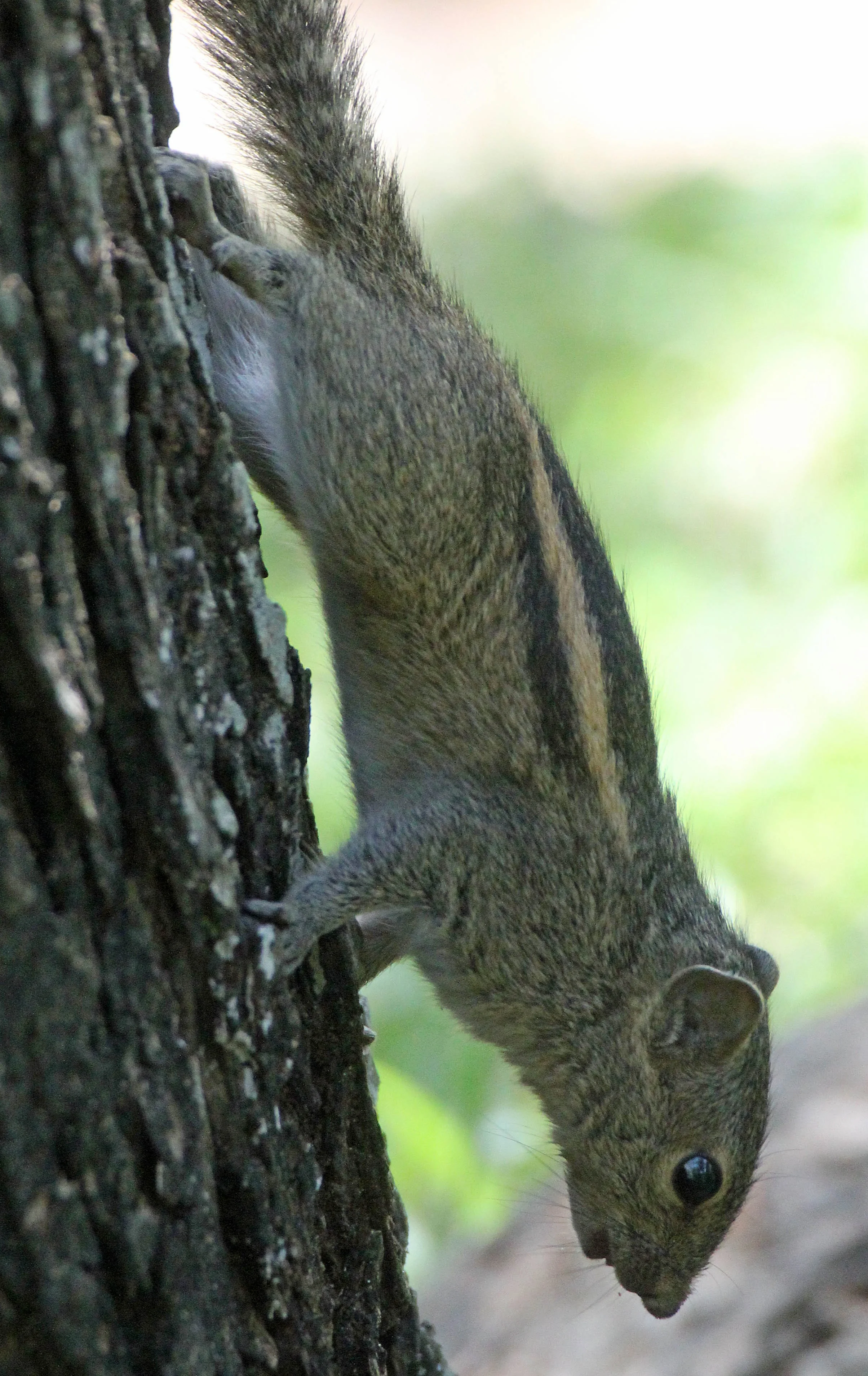














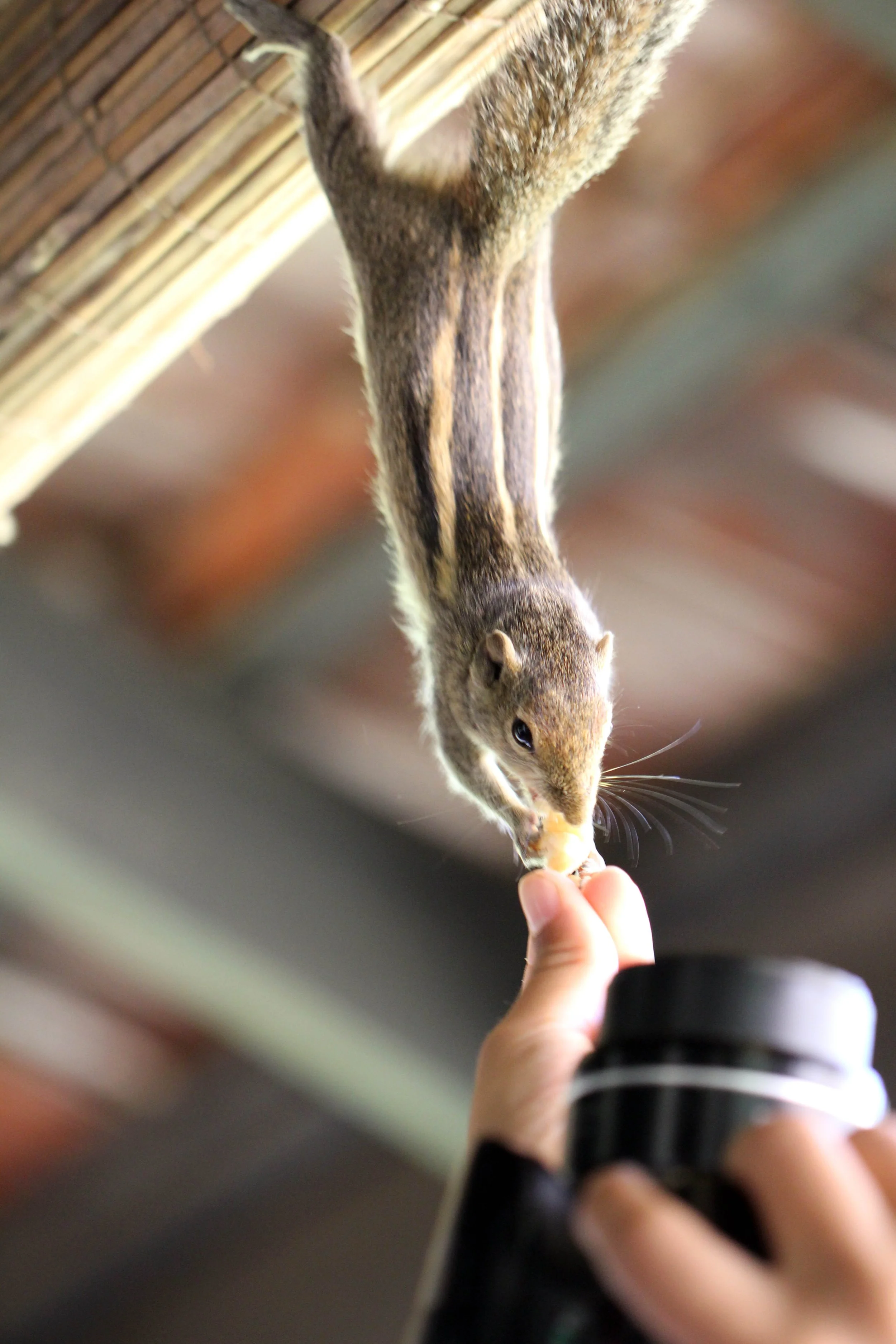










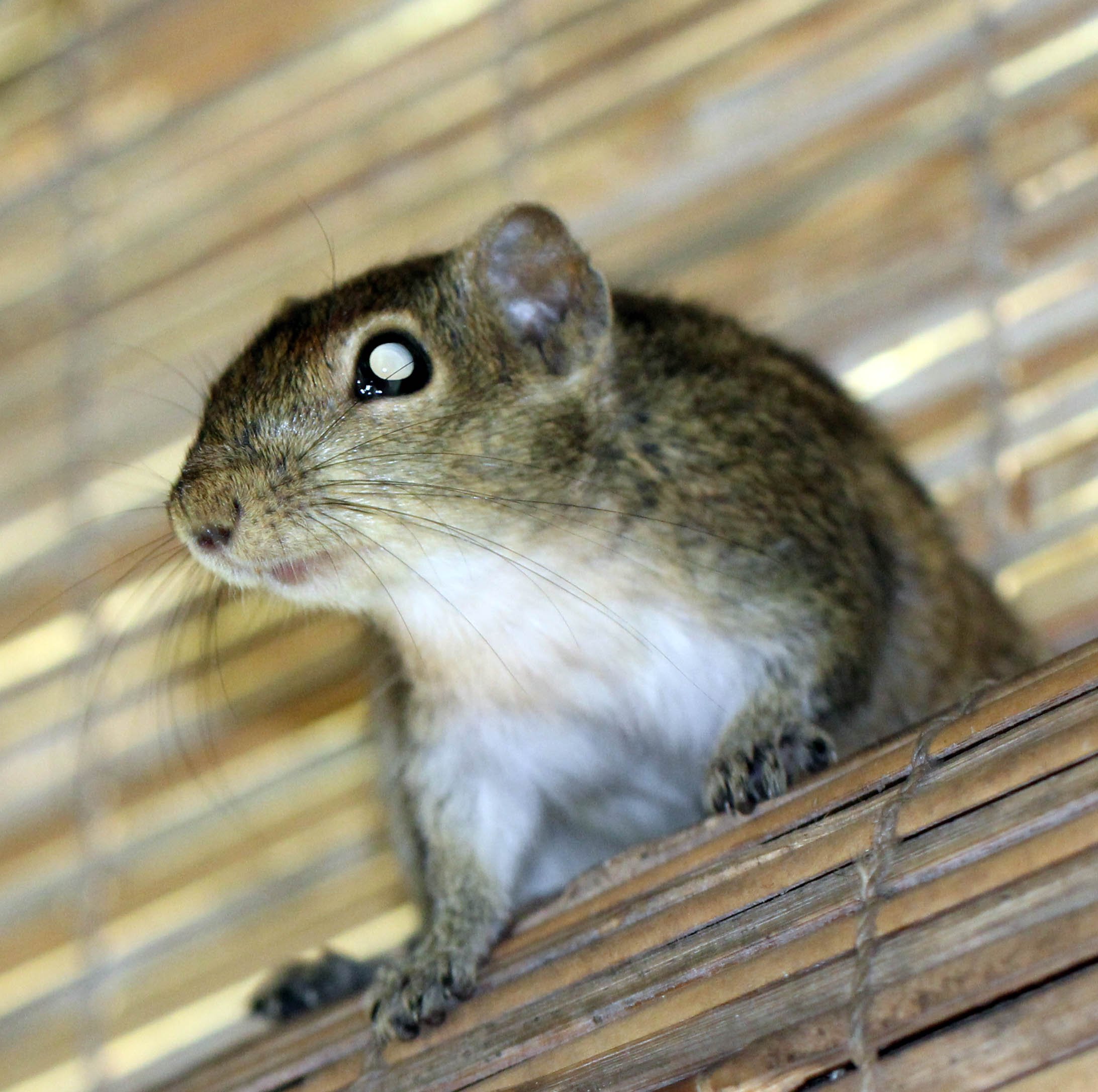
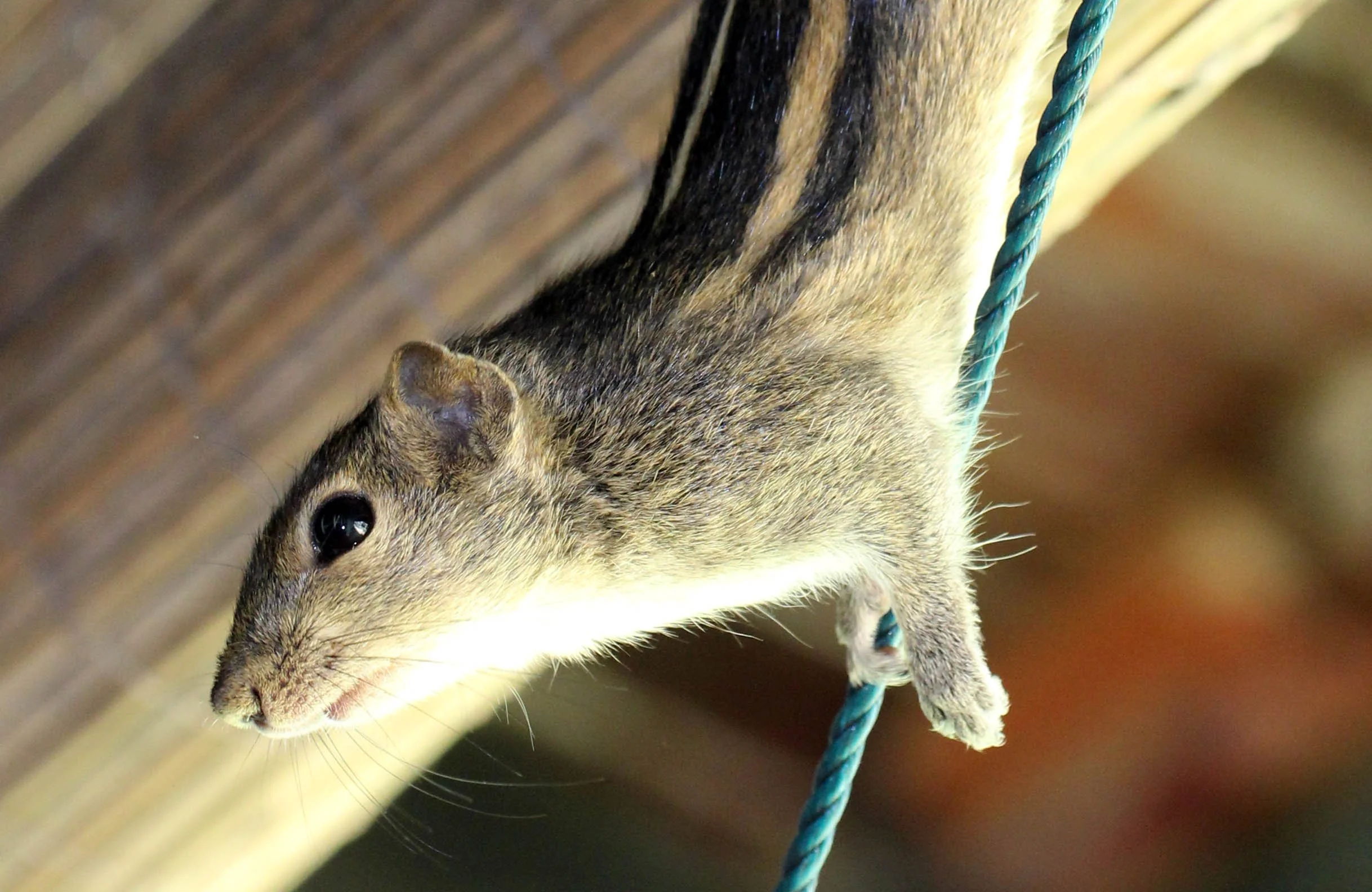












The Northern Palm Squirrel (Funambulus pennantii) also called the Five-striped Palm Squirrel is a species of rodent in the family Sciuridae.[5] Some authorities recognize two subspecies, F. p. pennantii and F. p. argentescens. It is a semi-arboreal species found in tropical and subtropical dry deciduous forests and many other rural and urban habitats. It is a common species with a wide range and the International Union for Conservation of Nature has rated its conservation status as being of "least concern".
It is found in the Andaman Islands, Nicobar Islands (where it was introduced), India, Nepal, Bangladesh, Pakistan and Iran. In India, it is fairly common in urban areas, even in large cities such as Delhi and Kolkata. Two subspecies, Funambulus pennantii argentescens and Funambulus pennantii lutescens, were suggested by Wroughton in addition to the nominate race; however, more recent workers do not make this distinction.
Thorington and Hoffman in Wilson and Reeder (2005) listed only two subspecies: F. p. pennantii and F. p. argentescens. However, Ghose, et al. (2004), described two additional subspecies: F. p. chhattisgarhi (distribution: eastern part of Maharashtra, Madhya Pradesh, Orissa, West Bengal, and Bihar) and F. p. gangutrianus (distribution: West Bengal, Madhya Pradesh, Uttar Pradesh, and Nepal), but Talmale (2007) treated the Maharashtra populations as F. p. pennantii only due to the overlapping in measurements and color variations observed in the specimens.
It has also been introduced to Australia where it is found in a very limited area. In Perth, Western Australia, there is an established population resulting from zoo escapees, and a population recorded around Mosman, New South Wales and near Taronga Zoo that may have become extinct. The feral populace, known locally as the five-lined palm squirrel, ranges out to the suburbs surrounding the Perth Zoo and also inhabits the grounds. They give birth over a period from August to May and most intensively around the austral spring and autumn.
In India, the southern boundary of the species' range is not clearly identified, and recent records suggest it may extend as far as Madanapalli. The southern boundary on the Western Ghats side clearly extends to localities including Dharwar and Mysore, in Karnataka.
The northern palm squirrel is a very adaptable species. It occurs in tropical and subtropical dry deciduous forest, montane forests to altitudes of 4,000 m (13,123 ft), scrublands, plantations, grasslands, arable land, rural gardens and urban areas.
The northern palm squirrel is a common species throughout most of its wide range. It is an adaptable species and no particular threats have been identified, and the International Union for Conservation of Nature has rated its conservation status as being of "least concern".
These individuals were photographed in various locations mainly in Gujarat India.











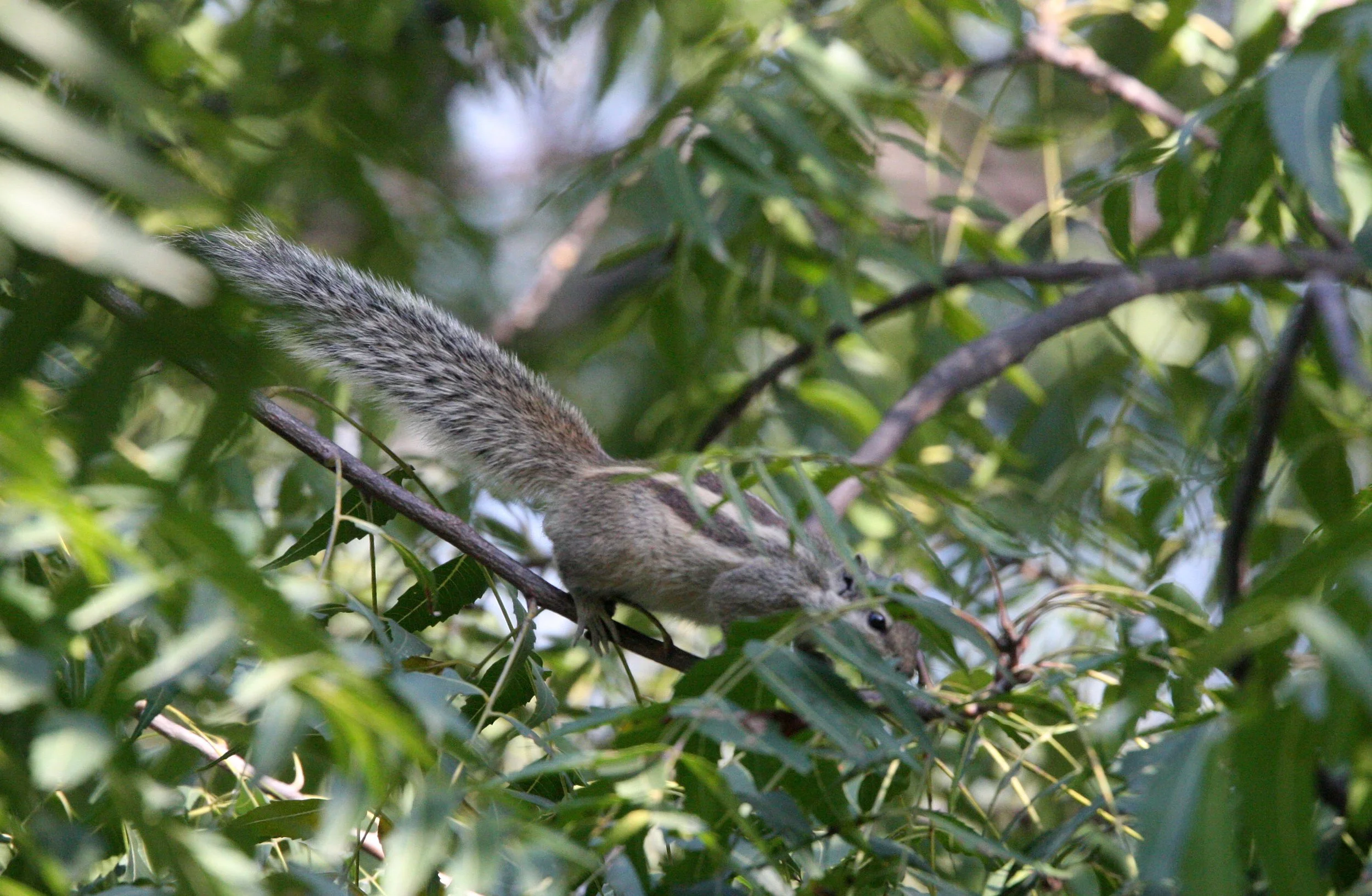




The Jungle Palm Squirrel, Jungle Striped Squirrel, or Western Ghats Squirrel (Funambulus tristriatus) is a species of rodent in the family Sciuridae endemic to India. Its natural habitats are subtropical or tropical dry forests and plantations. This species is tolerant to habitat changes and is common in tea plantations in Western Ghats. This squirrel is confined to forests with tall trees within the West Coast of the Indian Peninsula. This confinement has led the Jungle Palm Squirrel to be a pest to cacao, mangos, grapes, and sapota, which are plants that commonly grow in the type of forest that this squirrel is confined to. The ratio between male and females is not split evenly, males have been reported to have a larger share of the population. Potential factors for the uneven sex ration include differences in "rate of persistence, mortality, dispersal, and predation pressure".
These individuals were photographed in Topslip in Tamil Nadu and Kerala India.








